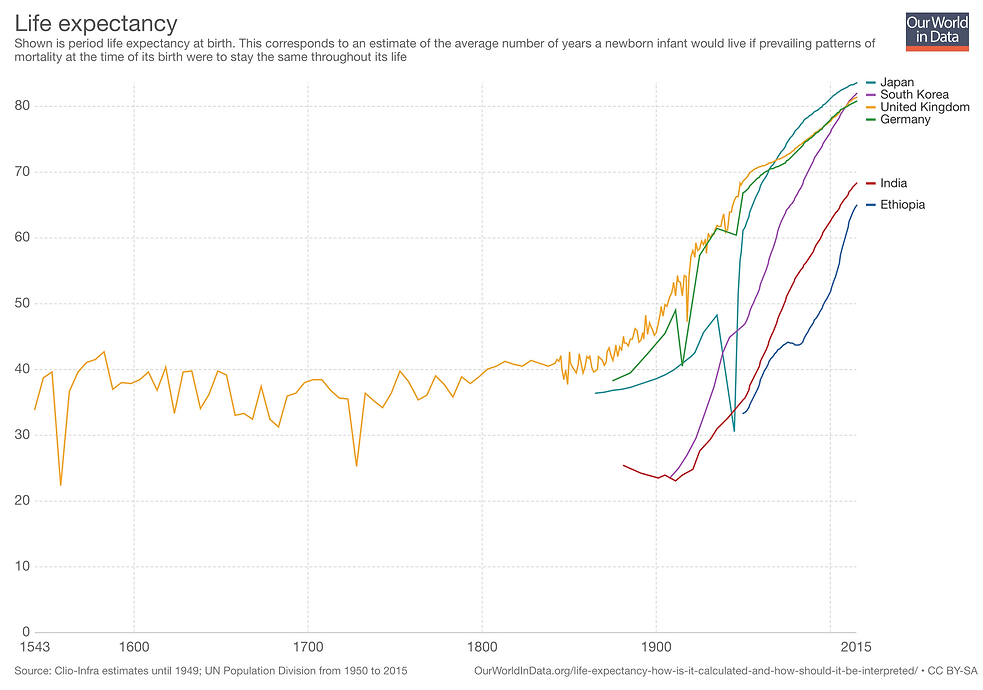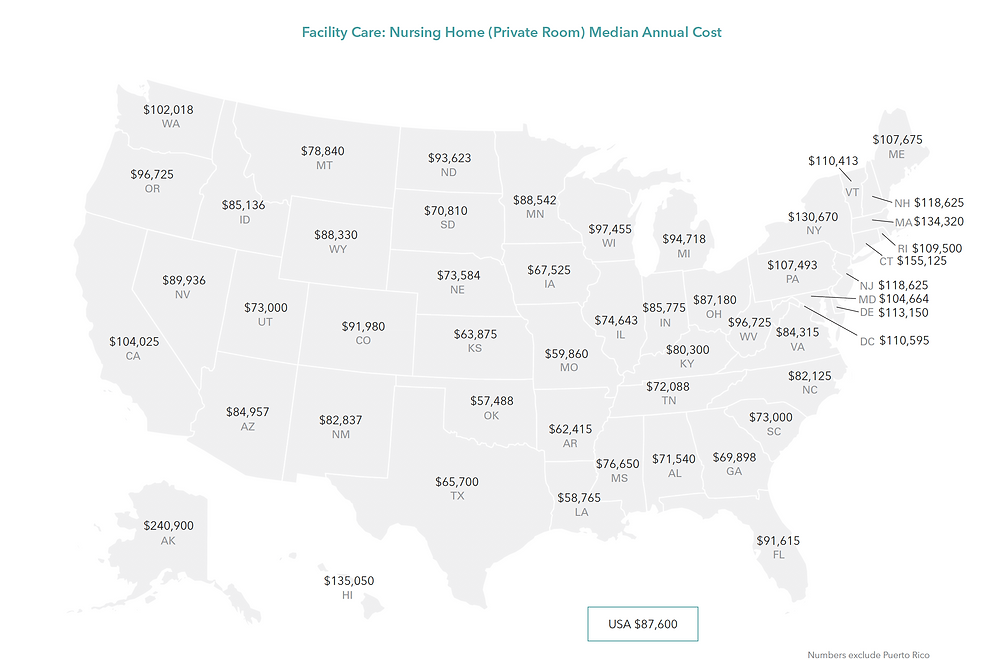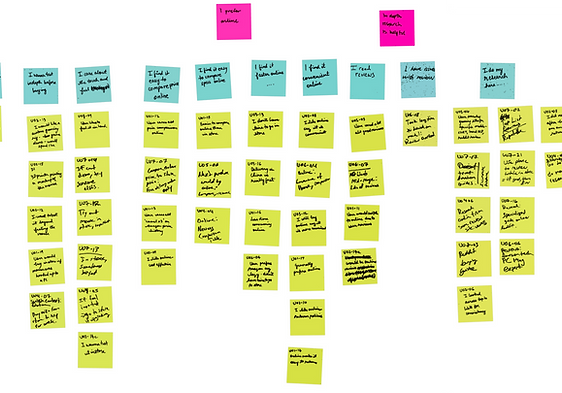top of page
Assess Nursing Home Resident Needs and Design Assistive Robotic Solutions
4PROGRESS Robotics Lab
UX Researcher & Designer
9/1/17 - 5/30/18

My team and I planned to conduct a contextual inquiry research study in nursing homes to understand and identify the daily activities older adults struggled with the most. We also wanted to learn and identify the primary areas where nursing home staff struggled to provide care. The final purpose of the study was to understand the thoughts, feelings, and attitudes older adults and their stakeholders had about using assistive robotic technologies.
Overview
Problems
Several problems are coming together at the same time to create a crisis in providing care to nursing home residents. Assistive robotics is a powerful solution to these problems.
Exploding Population

Shortage of Caregivers

Increased Life Expectancy

Unaffordable Nursing Home Costs

Study Design: Contextual Inquiry
My team and I planned to go into the field environment, the nursing homes, to understand users' and stakeholders' needs by observing and interviewing them in the context of their daily activities.

Study Artifacts
Participant Selection: Older Adults and Stakeholders
The following users and stakeholders were selected to participate in this study. Part of the purpose of the study was to determine who needed the most assistance. For example, is it older adults or is it the clinicians providing the care to older adults? In addition, the following were also chosen to participate, because a nursing home is a complex environment with many different parties working together. These key stakeholders from administration to medical providers to older adults's family and friends needed to be included, as well.
-
Older adults with and without cognitive impairments. Approximately 70% of nursing home residents have some level of cognitive impairment, which is why these potential users were included.
-
Family and friends of older adults. Family and friends were included, because they are involved in older adults' care. With a brand-new device like an assistive robot, they need to be comfortable and accepting of the technology.
-
Nursing home aides, administrators, and medical directors/physicians/nurses. The nursing home aides are the primary day-to-day caregivers, so their input is essential. Administrators and clinicians are also actively involved in older adults' care.
-
Legal representatives of cognitively impaired older adults. To include cognitively impaired older adults in this study, the study team would be required to receive the consent of older adults' legal representatives.
Participant Requirements & Screening Questions
With the assistance of the gerontologist I recruited for our team, I decided on the specific requirements for each type of participant. Since most nursing home residents are 60-years-old or older, this was one of the requirements for older adults. Another requirement was full-time residence, so the older adults would be very familiar with the nursing home environment and could identify areas where they needed assistance.
For clinicians and nursing home administrators, I decided to require at least 1 year of experience working at the specific nursing home in which we would conduct the study. This requirment was made to ensure these participants were deeply familiar with the processes, environment, and people in the nursing home.
To ensure study participants would meet the required criteria for the study, I developed screening questions for older adults and stakeholders.
Participant Recruitment Materials
For participant recruitment, I created 2 information sheets tailored to each audience. One was for residents, family and friends, and for legal representatives of cognitively impaired older adults. The second was for nursing home staff. The information sheets were written in plain language and were designed to anticipate common questions about the research study in particular and research studies in general. By addressing these questions in the information sheet, the goal was to increase participant comfort levels, with the intent to increase participation levels and enhance the overall experience.
Consent & Assent Forms
Using a variety of consent form templates, I created a set of consent forms that were tailored to this study. As cognitively impaired older adults were to be included, complex forms were required. Legal representatives must give consent for cognitively impaired older adults to participate, because they can not legally provide consent. In addition, cognitively impaired older adults need to provide assent, which can be provided orally or in written form.
Interview Questions
I developed 5 different sets of interview questions. Most of the questions were semi-structured, because this was the first time the team would interview these particpants. This way we would get a better understanding of common, general issues, before focusing on specifics in later follow-up interviews. The sets of interview questions were divided and tailored for the following groups:
-
Older adults
-
Family/friends of older adults
-
Medical Director/overseeing physician/Head of Nursing
-
Nursing home administrator
-
Nursing home aides
Robotics Videos
The goal of this research study was not only to assess needs. It was also to determine older adults' and stakeholders' feelings about using robotic technologies, which is critical to their acceptance and adoption of these technologies. Therefore, the team planned to use videos to show examples of current assistive robotic technologies and those that will potentially be available in the future. With 3 videos in total, 2 were for older adults and 1 was for stakeholders.
Older Adults
-
Fig. 1 - First video shows a mix of future and current robotic assistive technologies: serving a drink, communicating through teleprescence, and feeding a person.
-
Fig. 2 - Second video shows potential future assistive technologies: food preparation and complex cleaning tasks.
Stakeholders
-
Fig. 3 - Third video shows a mix of future and current robotic assistive technologies: transporting laundry and alerting nursing home staff of resident emergencies.
Once participants finished watching the videos, we planned to conduct short interviews to assess feelings, thoughts, and attitudes toward the technologies. You can access the videos below.
Fig. 1 - Mix of Future & Current Assistive Robotic Technologies
Fig. 2 - Potential Future Assistive Robotic Technologies
Fig. 3 - Mix of Future & Current Assistive Robotic Technologies
Debriefing Script
When interviewing the older adults, I planned to temporarily conceal the purpose of the study until the interviews were completed. I made this decision, because I didn't want to prime our interviewees to provide the team with responses that they may have thought we were looking for. Often interviewees want to "please" their interviewer and be a "good" subject. We also considered that the concealment would most likely not cause any harm to our participants. With this in mind, we expected to receive better quality data with answers that were natural, open, and honest. At the end of the interviews, we planned to disclose the reason for the study, explain why it was temporarily concealed, and invite the interviewees to ask any questions they may have had. These steps are outlined in the debriefing script we prepared.
With the raw data collected through the contextual inquiry process, we planned to analyze the data qualitatively by coding the interview transcripts and creating an affinity diagram.

Qualitative: Code interview transcripts

Qualitative: Use affinity diagram to identify patterns & themes
Data Analysis
Use Validated Data to Inform Robot Design
Following the data analysis, we planned to validate our findings using quantitative methods, including structured behavioral observations and surveys. With our data validated, we would use our findings to inform the design of our robot. The next steps would include ideating and sketching and creating personas, use case scenarios, and storyboards. Then we would follow with low-fidelity prototyping and usability testing, continuing to iterate. We would then continue to move forward, increasing prototype fidelity and then producing a Proof of Concept (POC).

Quantitative: Structured behavioral observations

Quantitative: Survey
Results
NOTE: Due to unforeseen events, we were unable to complete this study, because of complications in the participant recruiting process. Although we could not complete the study, designing the study and creating all of the artifacts were a tremendous learning experience. Also, I learned how to build, recruit, and manage a research team, under the advisement of my professors. I recruited Professor Chad Jenkins, a roboticist, and Professor Jane Banaszak-Holl, a gerontologist, both from the University of Michigan. I also recruited 4 UX Researchers from my master's program at the School of Information, 1 master's student from Industrial Operations and Engineering, and one undergraduate from the Computer Science department at the University of Michigan.
Lessons Learned
During the study, I learned that it's important to select research sites (nursing homes) early in the process to understand how their operations are run day-to-day to minimize any potential disruptions due to the research study. In addition, I learned that university research governing bodies can have a very different outlook on research protocols, which can be quite constricting in study design and, unfortunately, detrimental to quality data collection. Since there are several university research governing bodies, I also learned that in healthcare-related studies, it is usually best to submit the research application to those that specialize in medical studies. I also learned that the type of governing body is usually determined by which department the Principal Investigator belongs. Therefore, in this case, ensuring the Principal Investigator was aligned to a department related to healthcare would be the best course of action in the future.
bottom of page
